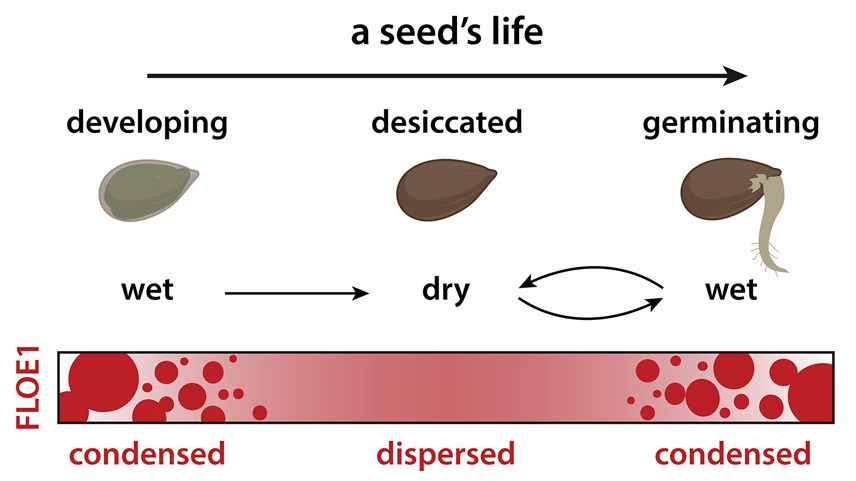
A prion-like protein regulator of seed germination undergoes hydration-dependent phase separation ($) (Cell)
Seed imbibition (i.e., water uptake) marks the beginning of germination, an irreversible process that might lead plants to death if it occurs under unsuitable conditions for seedling development. Therefore, it is expected that seeds only germinate when water is readably available. However, the molecular…

A seed coat-specific β-ketoacyl-CoA synthase, KCS12, is critical for preserving seed physical dormancy ($) (Plant Physiol.)
Physical dormancy is a dormancy class caused by a water-impermeable cell layer that prevents seed water uptake. Despite being present in several families, its molecular basis has seldom been addressed. Here, Chai and colleagues identify a β-ketoacyl-CoA synthase (KCS) –one of the enzymes that participate…
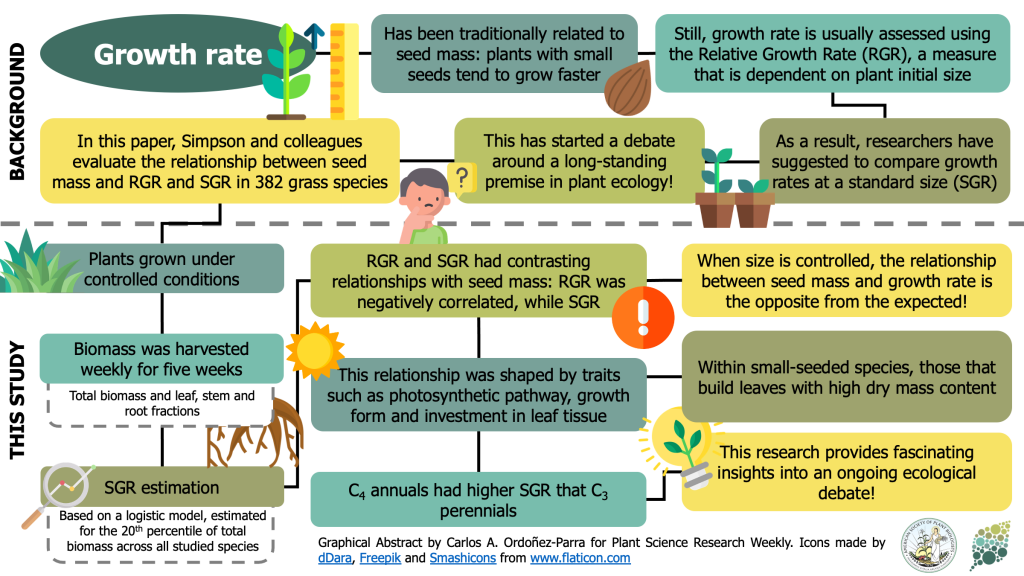
Large seeds provide intrinsic growth advantage that depends on leaf traits and root allocation (Funct. Ecol.)
A long-standing premise in plant ecology is that seed mass and growth rate are negatively correlated, meaning that small-seeded species grow faster than large-seeded ones. However, this relationship remains controversial given that the most common measurement for growth rate –Relative Growth Rate (RGR)–…
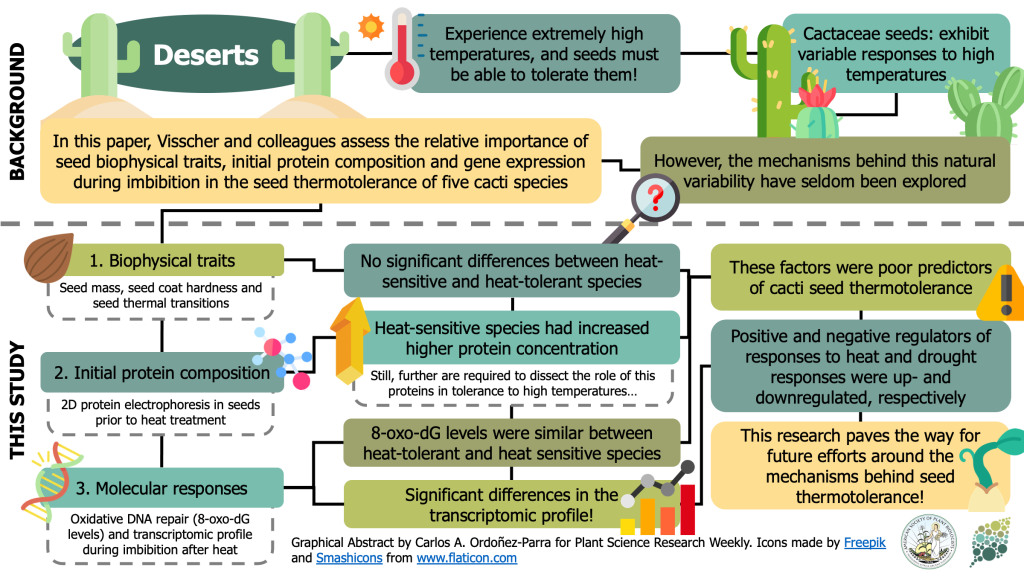
Comparative analyses of extreme dry seed thermotolerance in five Cactaceae species (Environ. Exp. Bot.)
Desert plants must produce seeds that can withstand incredibly high temperatures. Nevertheless, different species of cacti –one of the most emblematic plant groups of these ecosystems– exhibit variable responses to extreme temperatures. In this fascinating paper, Visscher and colleagues conduct a…
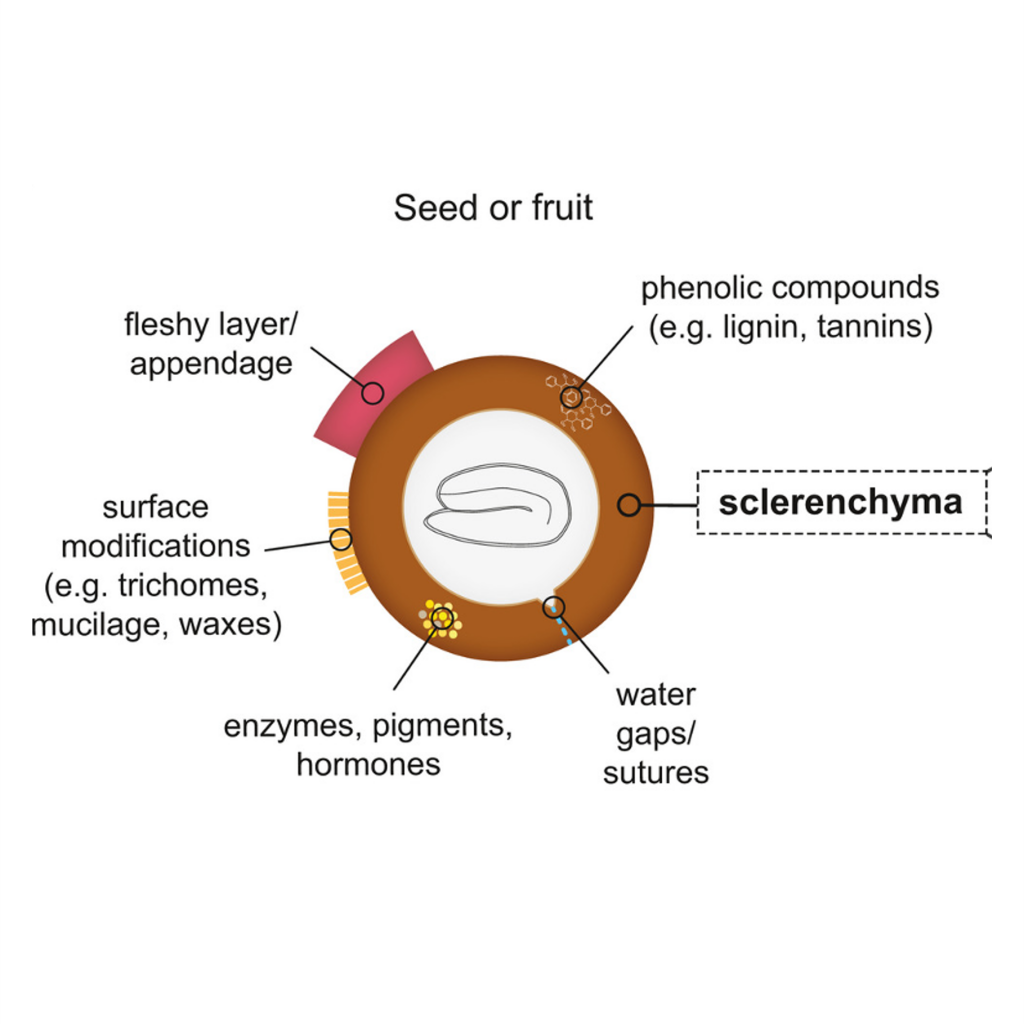
Review: Functional packaging of seeds (New Phytol.)
In this review, Huss and Gierlinger describe the different anatomical features that shape sclerenchyma function in hard seed encapsulations. Hard encapsulations are classified as static (non-deforming at the macroscopic level) or responsive (deforming in response to environmental changes), depending…
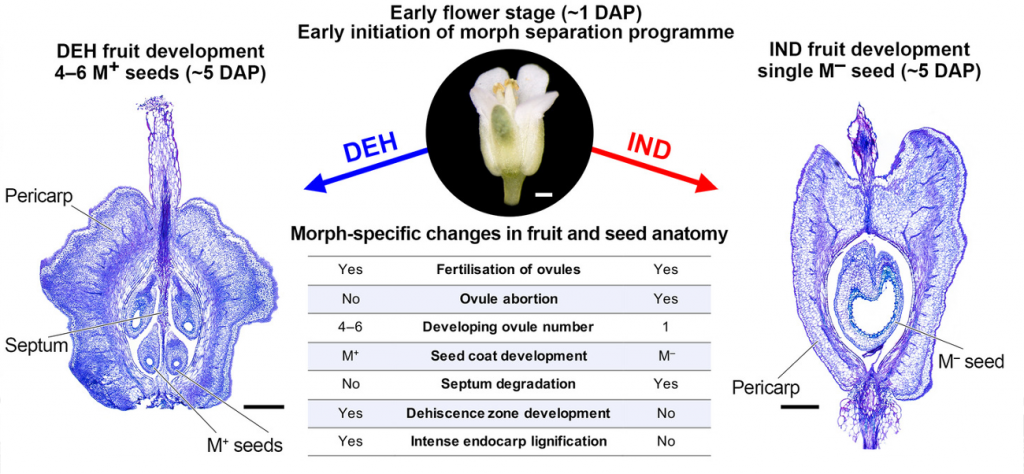
A tale of two morphs: seed coat differentiation in the dimorphic diaspore model Aethionema arabicum (Brassicaceae) (Plant J.)
While most plants have a single fruit and seed form, several species produce two or more distinct fruit and seed types, although the mechanisms behind this phenomenon remain unknown. Here, Arshad and colleagues assess the differences in the internal morphology and transcriptomic profile throughout development…
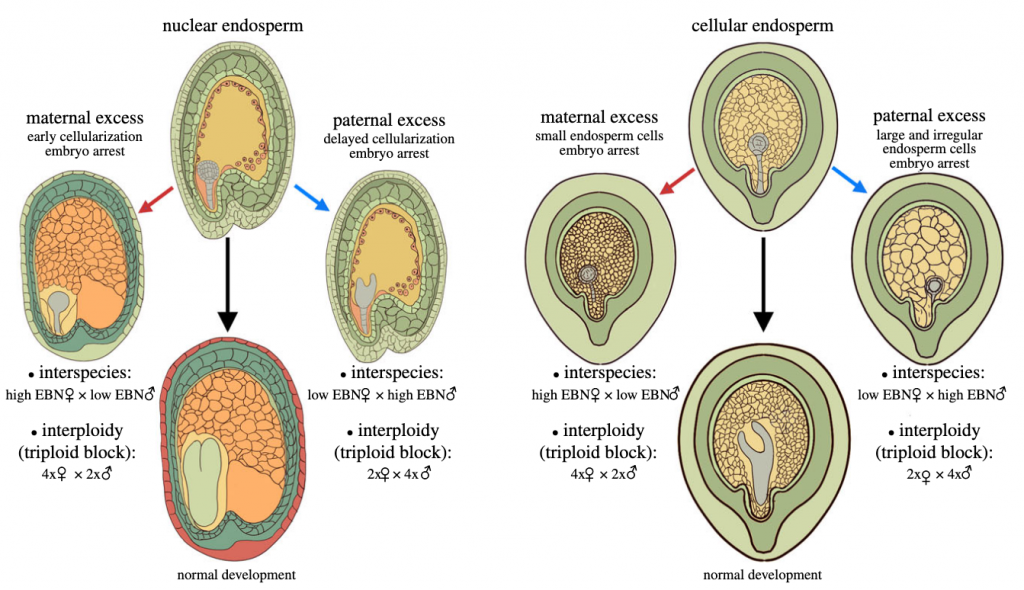
Review: Postzygotic reproductive isolation established in the endosperm: mechanisms, drivers and relevance ($) (Phil. Trans. R. Soc. B)
In this fascinating review, Köhler and colleagues show us that the seed endosperm is not only a nutritive tissue that supports embryo growth, it also nourishes the course of plant evolution. When closely related species or species with different ploidy levels hybridize, endosperm development deviates…
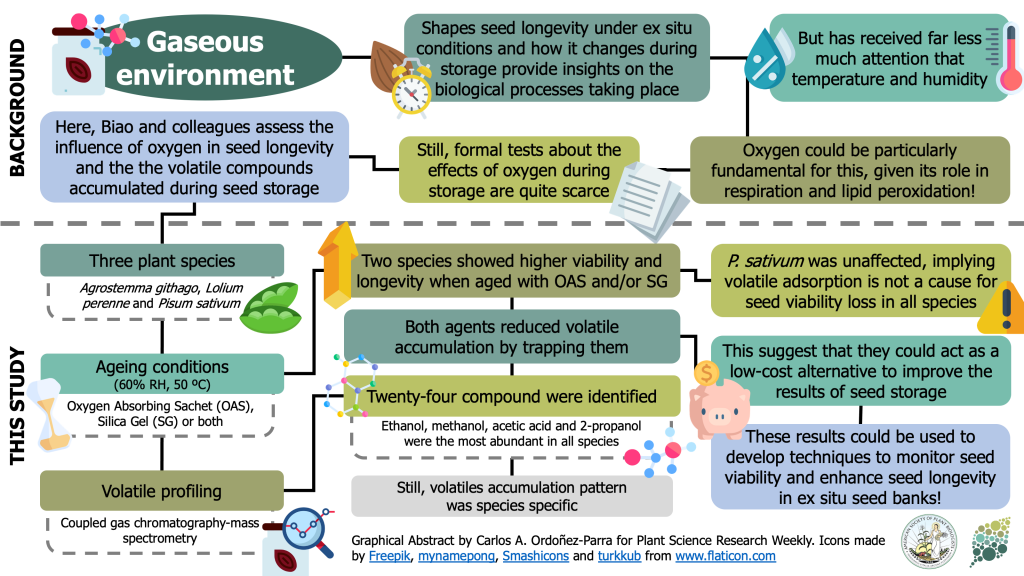
Gaseous environment modulates volatile emission and viability loss during seed artificial ageing (Planta)
The gaseous environment is thought to play a fundamental role in seed longevity in storage conditions, given the role of oxygen and other volatile compounds in seed viability loss. However, formal tests of its influence are still scarce compared to other storage parameters such as temperature and humidity.…
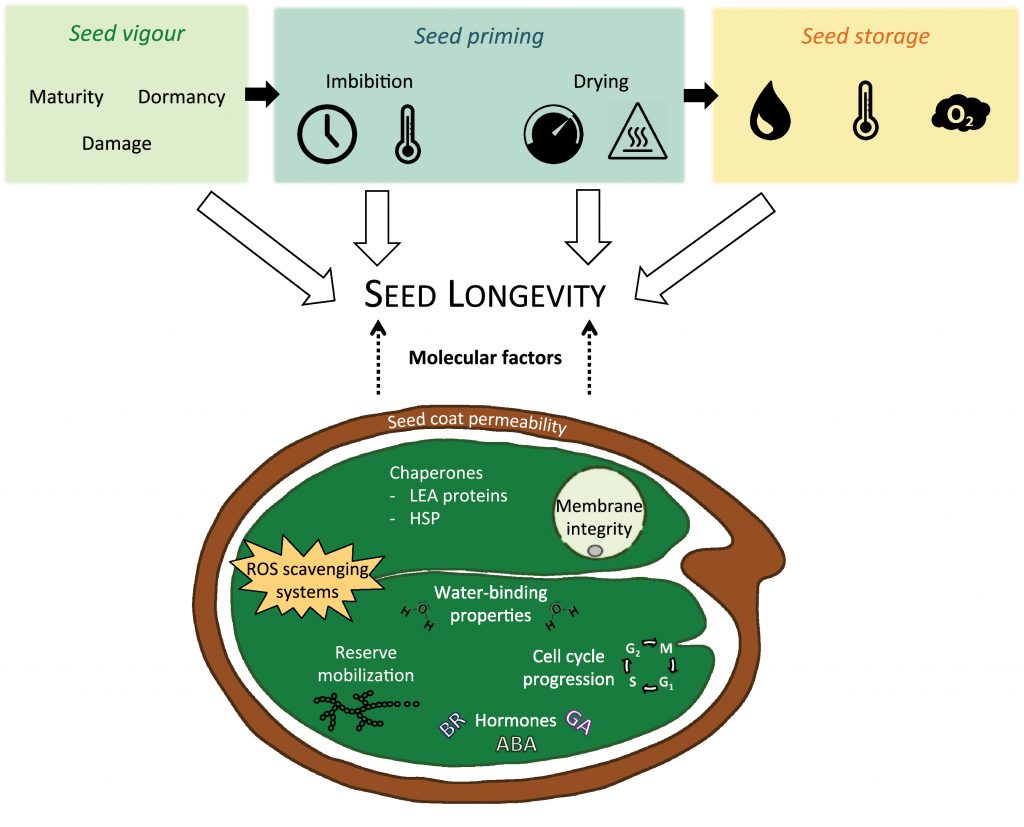
Review: Ageing beautifully: can the benefits of seed priming be separated from a reduced lifespan trade-off? (J. Exp. Bot.)
Seed priming is a family of presowing techniques that control water uptake in seeds, so they are dehydrated once metabolic activities have restarted but before the end of germination. Primed seeds have shown increased and more synchronized germination, especially under stressful conditions, making these…

